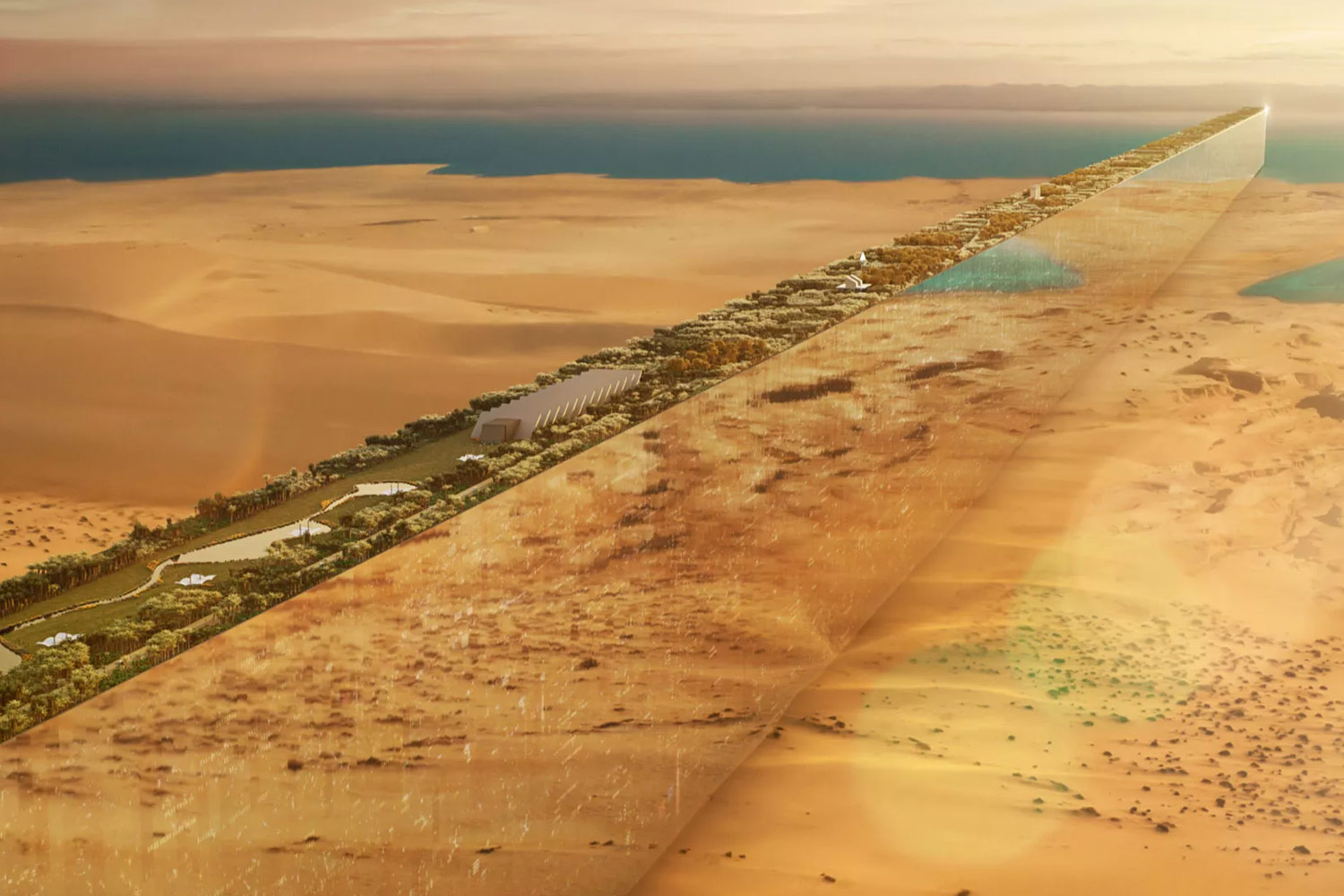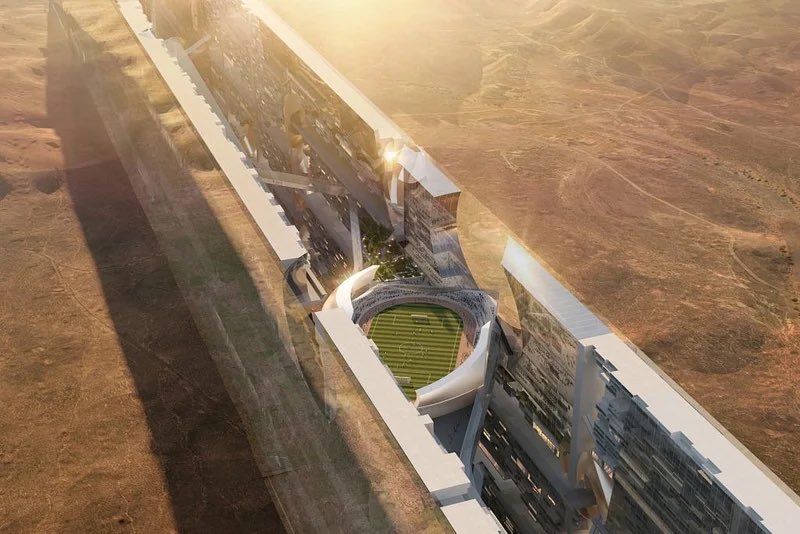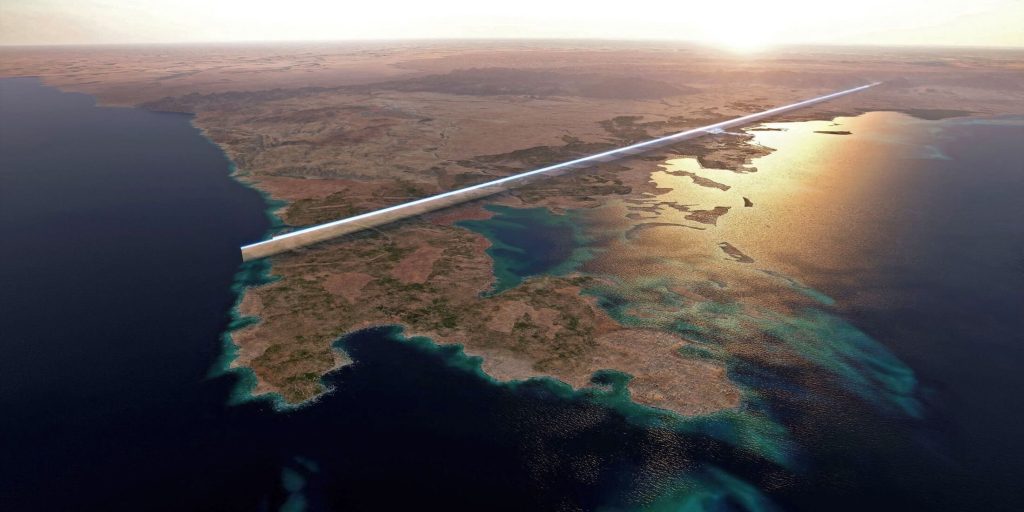According to an article in the journal NPJ Urban Sustainability, researchers Rafael Prieto-Curiel and Daniel Kondor from Complexity Science Hub Vienna have assessed the potential mobility challenges that may arise in The Line linear city in Saudi Arabia. The article, “Arguments for Building The Circle and not The Line in Saudi Arabia,” suggests that a linear shape is not optimal for a city due to inefficiencies.
“We should seriously consider whether the truly unique attribute of The Line—its form—is the best shape for a new city. We note that there are other possible reasons for choosing this unique form, such as the creation of a unique identity that will create and reinforce a status of Global City for The Line” wrote Rafael Prieto-Curiel and Daniel Kondor.
The concept of The Line as a 15-minute neighborhood promotes sustainability by providing essential services within a short distance; a city’s true value lies in its ability to offer specialized businesses and institutions that cater to specific interests. This requires exploring the portion of the city beyond immediate neighborhoods. The Line, an urban development project, aims to address these aspects through high-density and mixed-use development. “However, it is yet unclear if the unusual shape contributes toward or against reaching these goals.” wrote researchers.
“In The Line, people are as far away from others as possible.” wrote researchers. With the calculations made by the researchers, The Line is actually not as walkable as one might think. Given that a walkable distance is 1.0 km, only 1.2% of The Line’s population is within walking distance of others. “Travelling from one random location of The Line to the other will take, on average, at least 60?min, including walking to and from a station, waiting for the next service, and riding a train that frequently stops.” they wrote.
On paper, the researcher recommends creating a circle city called The Circle where tall buildings are arranged in a circular shape. The Circle’s buildings occupy the same surface area as The Line but are closer together. With a radius of only 3.3 km, the expected distance between two random people in The Circle is just 2.9 km. This means most places are within walking distance, reducing the need for high-speed rail systems. The Circle’s compact design allows for active mobility, with 24% of the population reachable on foot and 66% within a 2 km radius. This round urban form minimizes commuting distances and lowers transportation energy consumption. “The Circle occupies roughly the same surface as Pisa, Italy, but has 50 times its population.” they wrote and added, “A round urban form is the most desirable since it reduces commuting distances and the energy required for transport.”
“The Circle achieves similar easily reachable neighborhoods but relies on significantly lower densities—in fact, requiring only densities achievable with well-established building technologies. Then, we should construct The Circle and not The Line. Mathematically, while The Line is essentially a one-dimensional city, The Circle is two-dimensional.” they wrote.
On May 20, during an event at the NEOM exhibition in Venice, Peter Cook expressed their thoughts on the currently under-construction linear desert city. They called the city an “amazing absurdity” and called the proposed 500m height “stupid.”





















Leave a comment